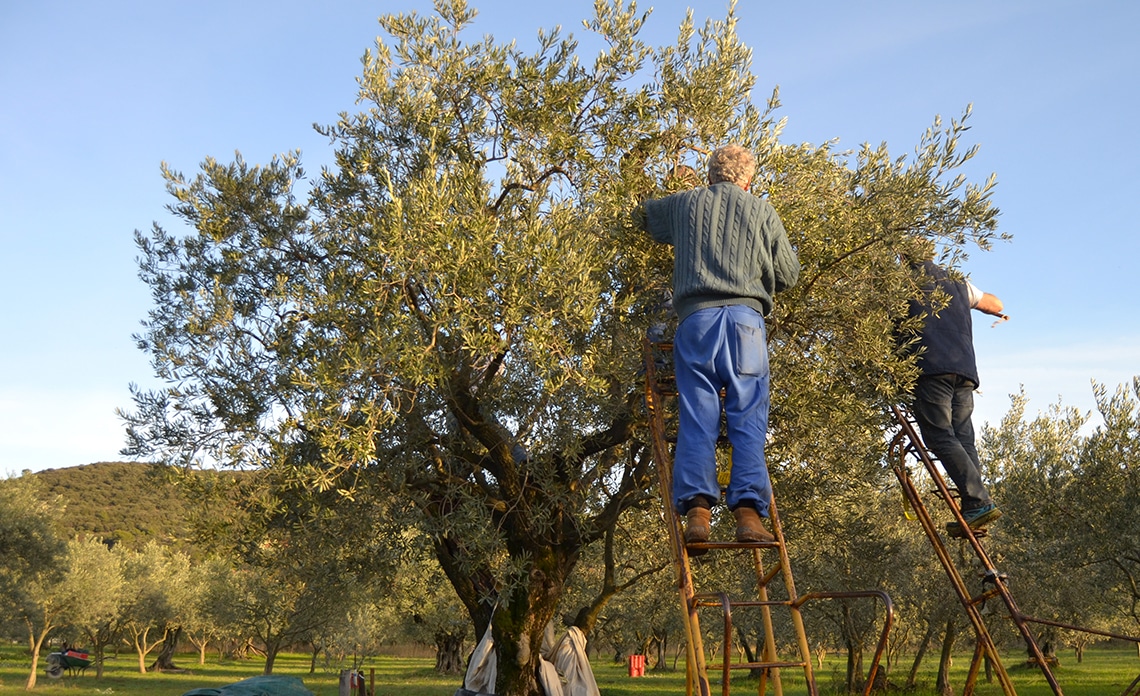In the heart of the PACA region, olive growers and millers are in full swing this November 2017. The final quality of French extra virgin olive oil will depend on several factors: the actual harvest period will vary according to the olive varieties, the healthy olive harvest and their rapid crushing. If the 2018 vintage of olive oil from the South of France promises to be excellent for our producers, the quantities, on the other hand, may not be there.
The 2017-2018 olive harvest has begun in France: prospects for an excellent olive oil that has become rare.
In the olive groves and mills of the PACA region, people are active. It is the annual period of the olive harvest for the production of table olives and olive oil. But it will be necessary to wait until the end of December or January 2018 to really taste the olive oil of New France. In the meantime, you can continue to enjoy the 2017 vintage with confidence until the end of 2018/beginning of 2019 and take advantage of Christmas to offer olive oils from the terroirs of France.
If, this year again, our producers are pessimistic about the quantity produced, they announce, an olive oil from France of excellent quality. Weather conditions have been unfavourable over the last 5 months. The olive trees have suffered from a prolonged drought. The lack of water has consequences on the yield of olives. They are smaller and many fall to the ground during the summer. The year 2016/2017 had been catastrophic with the consequence that demand far exceeded supply. A succession of bad harvests since 2012 has led to the scarcity of French olive oil and to an increase in its price.
The quality of French olive oil from the 2018 vintage should be excellent, due to the absence this year of the olive fly and the drought has the merit of avoiding the development of larvae. The olives from our AOC, PDO and organic producers are superb. In the olive groves of the hills with stony soil, they have remained small but they are beautiful and perfectly healthy. In the plains, the olives are full of their pure juice.
A little look back on the history of the olive tree and the production of olive oil in France.
To better understand the decline in olive oil production in France, we must look back at its history. In France, the wild olive tree, called oleaster, has been present for more than 12,000 years. Cultivation developed from 450 BC.
In the Middle Ages, the main use of olive oil is religious but it is also used for lighting, body care, medicine and food.
In the 19th century, the famous Savon de Marseille was born in Marseilles, made mainly from olive oil. Oil mills developed and almost every village in the South of France had its own oil mill. But olive oil will gradually be replaced by sunflower and peanut oil at lower prices. Oil and electricity will replace oil lamps. French olive oil will no longer be found in the Savon de Marseille.
In the 20th century, rural exodus, World War I and successive frosts will lead to a reduction of more than 50% of the olive-growing areas. In 1956, 2.3 million olive trees remained, out of the 23 million olive trees in France in 1866. Research into the benefits of olive oil, which began in the 1970s, is giving a new impetus to olive oil consumption in France. 900,000 olive trees will be planted between 1990 and 2000. From 1994, the AOC (Appellation d’Origine Contrôlée) will be created.
In 2006, France counts 4.3 million olive trees. But olive groves are gradually being abandoned due to the ageing of producers. Know-how is being lost and production methods are not evolving. At the same time, reasoned and organic agriculture is developing. But the poor harvests of recent years have meant that demand cannot be met. French production in 2016 will only cover 4% of olive oil consumption in France.


